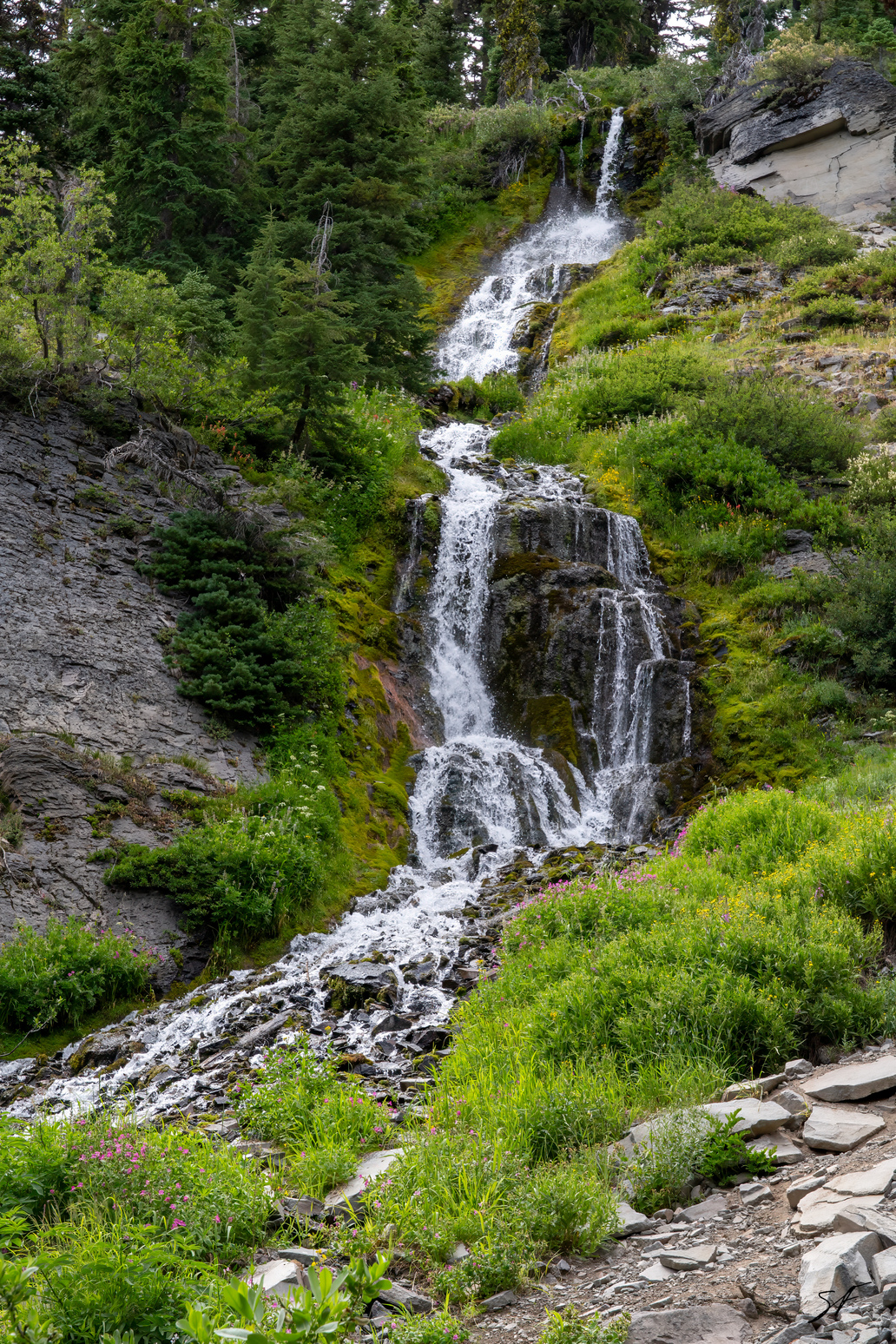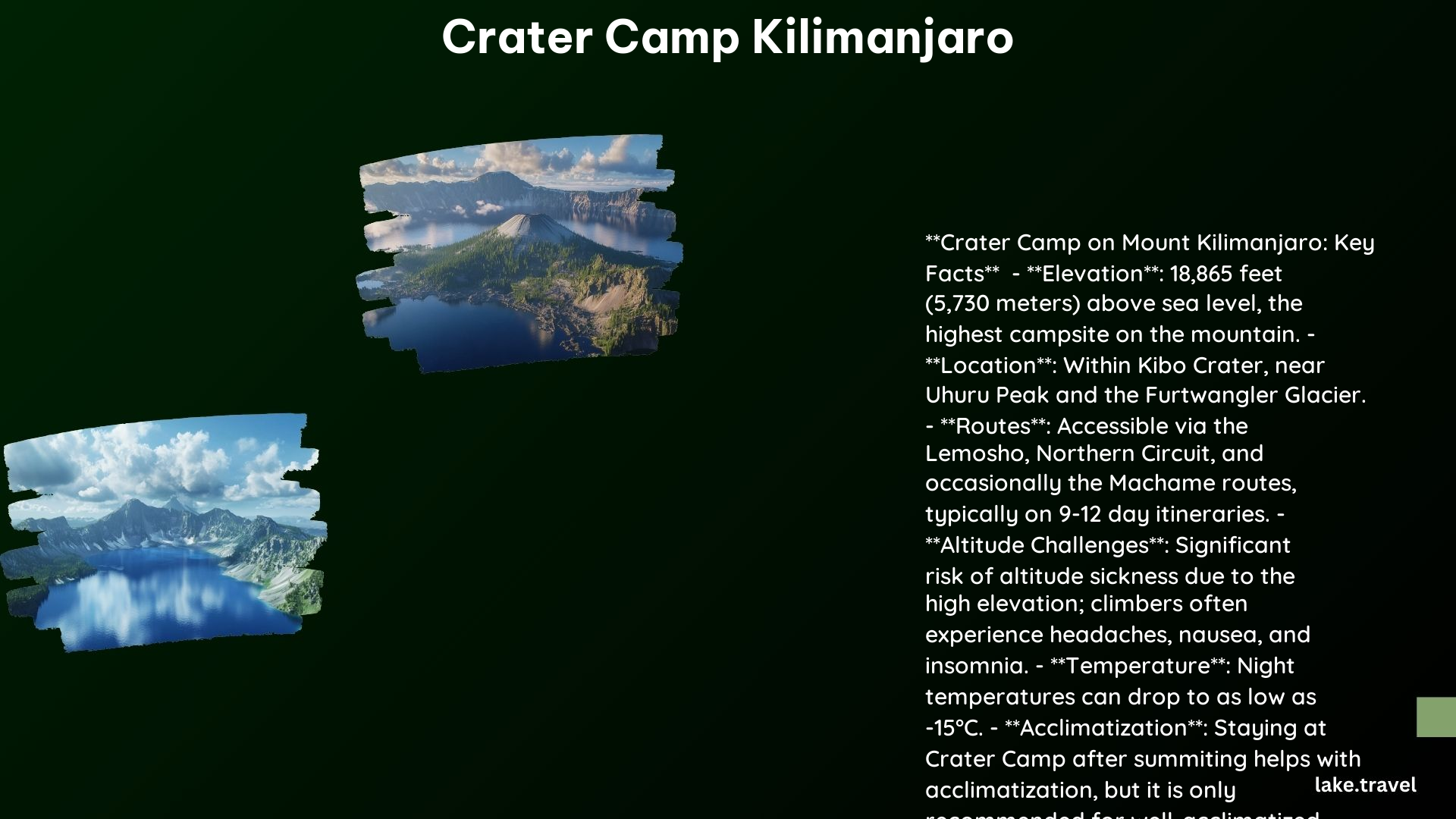Crater Camp Kilimanjaro offers an unparalleled high-altitude camping experience at 5,730 meters (18,484 ft) on Africa’s highest peak. This unique campsite, situated within Kilimanjaro’s volcanic crater, provides adventurers with breathtaking views of glaciers, the ash pit, and the surrounding landscape. The challenging trek to Crater Camp requires proper acclimatization and experienced guides, but rewards climbers with an unforgettable journey through diverse ecosystems and the chance to witness Kilimanjaro’s geological wonders up close.
What Makes Crater Camp Kilimanjaro Unique?

Crater Camp Kilimanjaro stands out as one of the most extraordinary camping experiences on the African continent. Here’s what sets it apart:
- Highest campsite on Kilimanjaro at 5,730 meters (18,484 ft)
- Located within the volcanic crater of Kilimanjaro
- Offers close-up views of glaciers and the ash pit
- Provides a less crowded summit experience
- Allows for daytime summit ascents
The camp’s location within the crater offers a rare opportunity to explore Kilimanjaro’s geological features and witness the raw beauty of its volcanic landscape.
What Are the Trail Details for Reaching Crater Camp?

The journey to Crater Camp is part of an extended trek, typically following the Northern Circuit route. Here’s a breakdown of the trail:
| Stage | Camp | Altitude (m/ft) | Typical Duration |
|---|---|---|---|
| Start | Londorossi Gate | 2,250 / 7,380 | N/A |
| Day 1 | Mti Mkubwa Camp | 2,780 / 9,120 | 3-4 hours |
| Day 2-3 | Shira 1 & 2 Camps | 3,500-3,900 / 11,480-12,800 | 5-7 hours each |
| Day 4-5 | 3rd Cave Camp | 3,950 / 12,960 | 4-5 hours |
| Day 6 | School Hut Summit Camp | 4,750 / 15,580 | 4-5 hours |
| Day 7 | Crater Camp | 5,730 / 18,484 | 5-7 hours |
The trail passes through diverse ecosystems, including:
- Tropical rainforest
- Heath and moorland
- Alpine desert
- Arctic zone near the summit
Hikers will encounter unique flora such as giant lobelias and senecio trees, as well as stunning views of the African plains below.
How Should Climbers Prepare for the Altitude?
Proper acclimatization is crucial for a safe and enjoyable experience at Crater Camp. Here are key recommendations:
- Choose a longer route with built-in acclimatization days
- Ascend slowly, following the “climb high, sleep low” principle
- Stay hydrated, drinking 3-4 liters of water daily
- Eat regular, high-calorie meals to maintain energy
- Consider taking acetazolamide (Diamox) after consulting with a doctor
- Listen to your body and inform guides of any altitude-related symptoms
It’s essential to have previous high-altitude experience before attempting Crater Camp. The extended Northern Circuit route provides extra days for acclimatization, increasing the chances of a successful and safe climb.
What Amenities Are Available at Crater Camp?
Crater Camp offers a basic but unique camping experience. Here’s what to expect:
- Tents provided and set up by the support team
- Sleeping bags and mats (usually provided by tour operators)
- Portable toilet facilities
- Meals prepared by camp cooks
There are no permanent structures at Crater Camp due to its high-altitude location. All supplies and equipment are carried by porters. Despite the basic amenities, the camp offers unparalleled views and a once-in-a-lifetime experience.
How Can Travelers Book a Crater Camp Kilimanjaro Trek?
Booking a Crater Camp trek involves several steps:
- Research reputable tour operators specializing in Kilimanjaro climbs
- Choose a route that includes Crater Camp (typically the Northern Circuit)
- Select preferred dates (dry seasons: January-March and June-October are ideal)
- Contact the tour operator for availability and pricing
- Pay a deposit to secure your booking
- Obtain necessary travel insurance and vaccinations
- Prepare required gear and equipment
It’s recommended to book at least 3-6 months in advance, especially during peak seasons. Costs typically range from $3,000 to $4,000 per person, depending on the operator and group size.
What Do Past Climbers Say About Their Crater Camp Experience?
Climbers who have stayed at Crater Camp often describe it as the highlight of their Kilimanjaro trek. Here are some common experiences:
- Awe-inspiring views of the crater, glaciers, and surrounding landscape
- Challenging but rewarding high-altitude camping
- Unique opportunity to explore the crater and ash pit
- Less crowded summit experience compared to other routes
- Spectacular stargazing due to the high altitude and clear skies
However, climbers also note:
- Extreme cold temperatures, especially at night
- Potential for altitude-related discomfort
- Physical and mental challenges due to the high altitude
Despite the difficulties, most climbers find the experience unforgettable and well worth the effort.
What Are the Best Times to Visit Crater Camp Kilimanjaro?
The best times to visit Crater Camp align with Kilimanjaro’s dry seasons:
- January to mid-March: Warmer temperatures and clear skies
- June to October: Cooler but very stable weather conditions
These periods offer:
- Better visibility for stunning views
- Reduced risk of rain and snow
- More comfortable hiking conditions
However, it’s important to note that weather on Kilimanjaro can be unpredictable, and conditions at Crater Camp can be extreme year-round due to its high altitude.
What Unique Activities Can Climbers Experience at Crater Camp?
Staying at Crater Camp offers several unique experiences:
- Explore the Reusch Crater and ash pit (2-3 hour round trip hike)
- Witness sunrise from the crater rim
- Visit the remaining glaciers up close
- Photograph the unique lunar-like landscape
- Stargaze in one of the clearest night skies in Africa
These activities provide a deeper understanding of Kilimanjaro’s geology and offer photographic opportunities that are impossible from other campsites.
By choosing to stay at Crater Camp, climbers gain an exclusive and intimate experience with Kilimanjaro’s summit, making their adventure truly unforgettable.
References:
1. Kilimanjaro With Crater Camping – Stay Above the Clouds
2. Kilimanjaro Crater Camp – Tusker Trail
3. Kilimanjaro Crater Camp – Kilimanjaro Climbing Company
